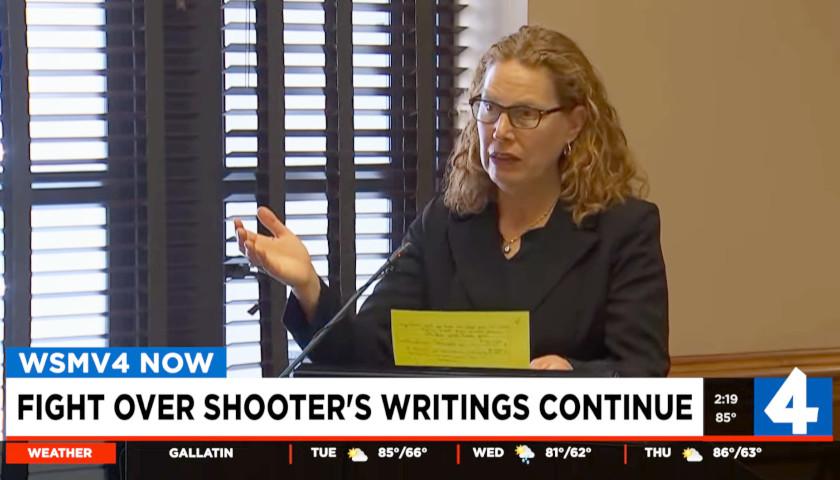The Nashville district attorney’s office says police were “insensitive” when in their reports they referred to an armed black man shot by an officer in self-defense as a suspect.
The criticism is found in a report issued last week by District Attorney Glenn Funk on the Feb. 10 shooting of Jocques Scott Clemmons by Josh Lippert, a white officer with the Metro Nashville Police Department.
“Identifying the officer as the victim and Mr. Clemmons as the suspect sends a message that could be perceived as biased, and seems insensitive because no charges could be brought against Mr. Clemmons,” the report says. “To label the parties in this manner, particularly in the beginning stages of the investigation, could create an appearance to the public that the investigation was biased.”
While the district attorney’s office determined Lippert acted in self-defense and will not pursue criminal charges against him, its report was critical of the police department’s handling of the case and recommended steps to eliminate any appearance of bias in the future and ensure minorities are treated fairly.
In future cases, the Tennessee Bureau of Investigation will alone conduct a thorough criminal investigation when an MNPD officer’s use of force results in a death. In the past, the police department alone conducted the investigation.
In Lippert’s case, the MNPD immediately began an investigation and then on Feb. 16, the district attorney asked the TBI to take over the investigation.
In addition to criticizing the labels used for Clemmons and Lippert, the district attorney’s report takes the police department to task for concluding only several hours after the incident that Lippert acted in self-defense.
“The investigation had barely begun,” the report says. “All of the surveillance video had not been collected or studied and independent witness Person 1 had not been discovered, identified, located or interviewed. A canvass of the neighborhood had yet to be completed to identify other witnesses.”
Surveillance video and the statements of the first witness supported Lippert’s version of events. A second witness was interviewed by both TBI and MNPD but the interviews contain “significant differences,” according to the district attorney’s report. Release of the TBI report is currently tied up in court.
On Feb. 10, Lippert was patrolling the Cayce Homes public housing development in East Nashville when he observed Clemmons failing to stop at a stop sign, according to the district attorney’s report and a police news release issued the day of the shooting.
After Clemmons parked his SUV at a Cayce Homes building, Lippert approached him. Clemmons ran away from the officer, ignoring Lippert’s commands to stop. Lippert caught up with Clemmons and pushed him to the ground. As Clemmons got off the ground, Lippert pulled out his Taser.
Clemmons ran back in the direction of the initial encounter, with Lippert in pursuit. A handgun fell from Clemmons’ clothing. Lippert put his Taser away and tried to kick the weapon away from Clemmons, commanding him not to pick it up. But Clemmons picked up the weapon, prompting Lippert to draw his service weapon. Clemmons fell in the parking lot and as he stood up, turned clockwise so that at one point the weapon was pointed in Lippert’s direction. Lippert fired at Clemmons three times, striking him two times in the back and once in the left hip. Clemmons later died during surgery at Vanderbilt.
Clemmons, 31, was convicted of a cocaine felony in 2014, for which he received an eight-year probated sentence and was forbidden by state and federal law to own a gun.
In an addendum to the report on the incident, the district attorney announced two initiatives “to make the justice system more fair and equitable.”
“Some in Metro Nashville perceive that police practices are unfair,” the report says, referring to a study called Driving While Black. The study “used statistical analysis to demonstrate disparity in traffic stops and searches” and “documented that these perceptions may have a valid basis in fact.”
The first initiative deals with reducing the rate of pre-trial incarcerations for misdemeanor offenses and the second initiative establishes a Conviction Review Unit to prevent wrongful convictions.
The district attorney’s report also says that the Lippert case “provides an opportunity for discussions regarding policing in this city. Questions have been raised in a variety of forums since this incident.” Among them are:
-
When should police engage in a pursuit of a suspect who is fleeing on foot? Should there be a policy regarding foot pursuits to eliminate potential bias?
-
How do we balance the safety of police with the sanctity of life of those who present a danger to the police or place themselves in a dangerous situation?









This is stupid! If they are a suspect, they should be called a “suspect”.